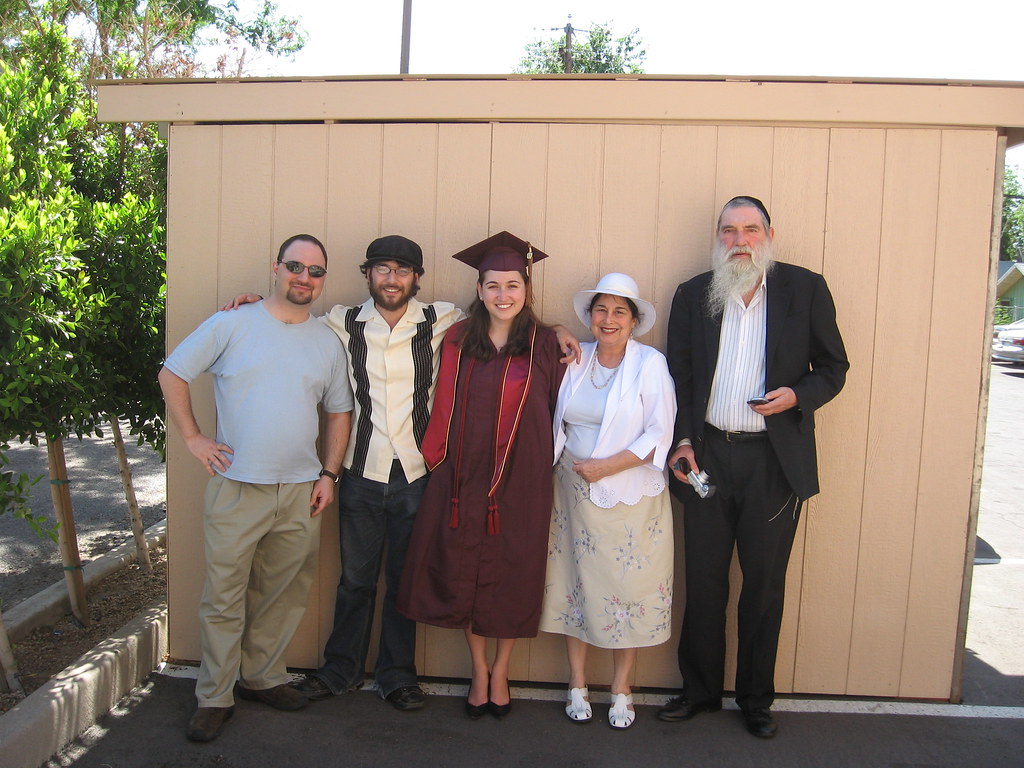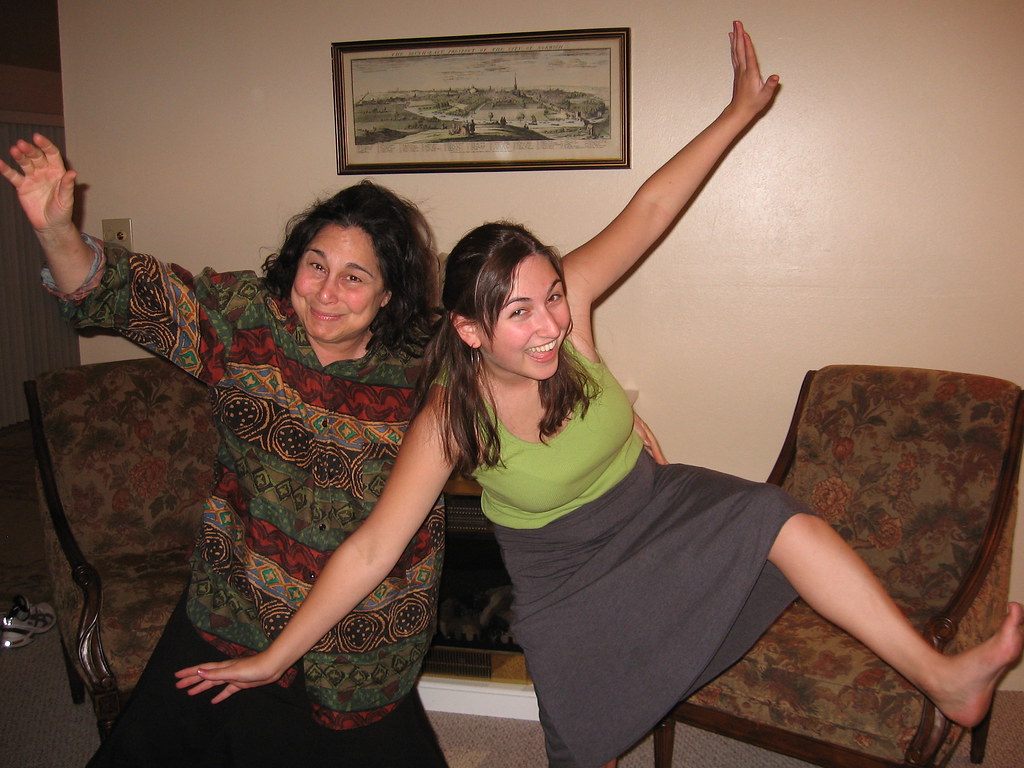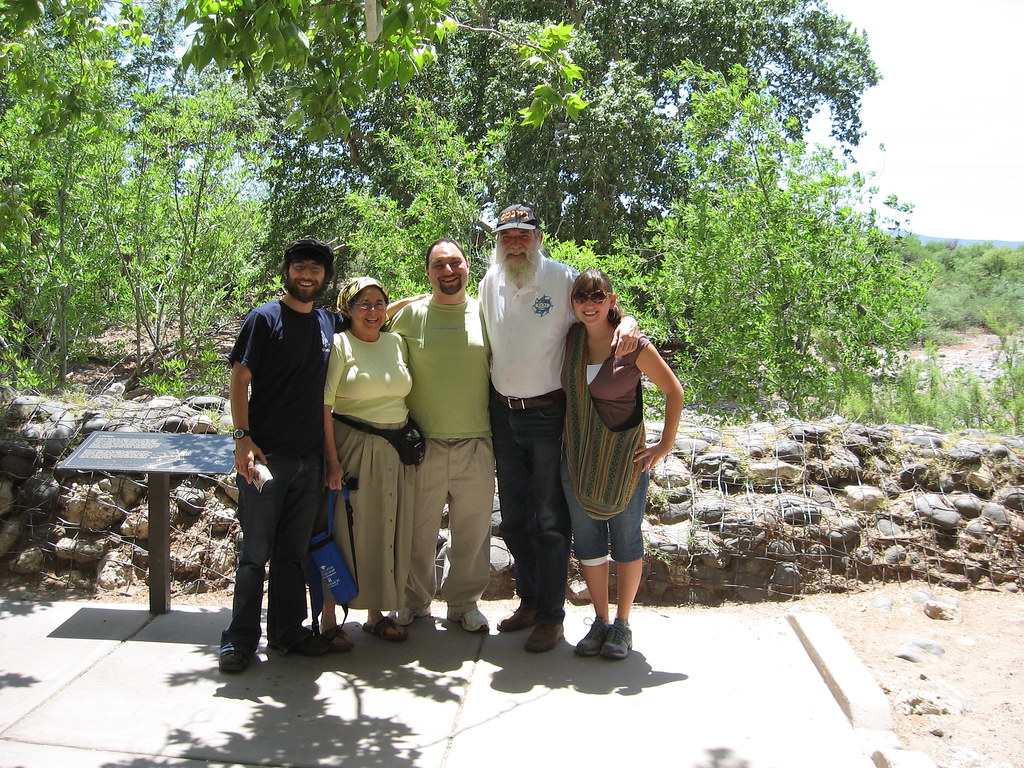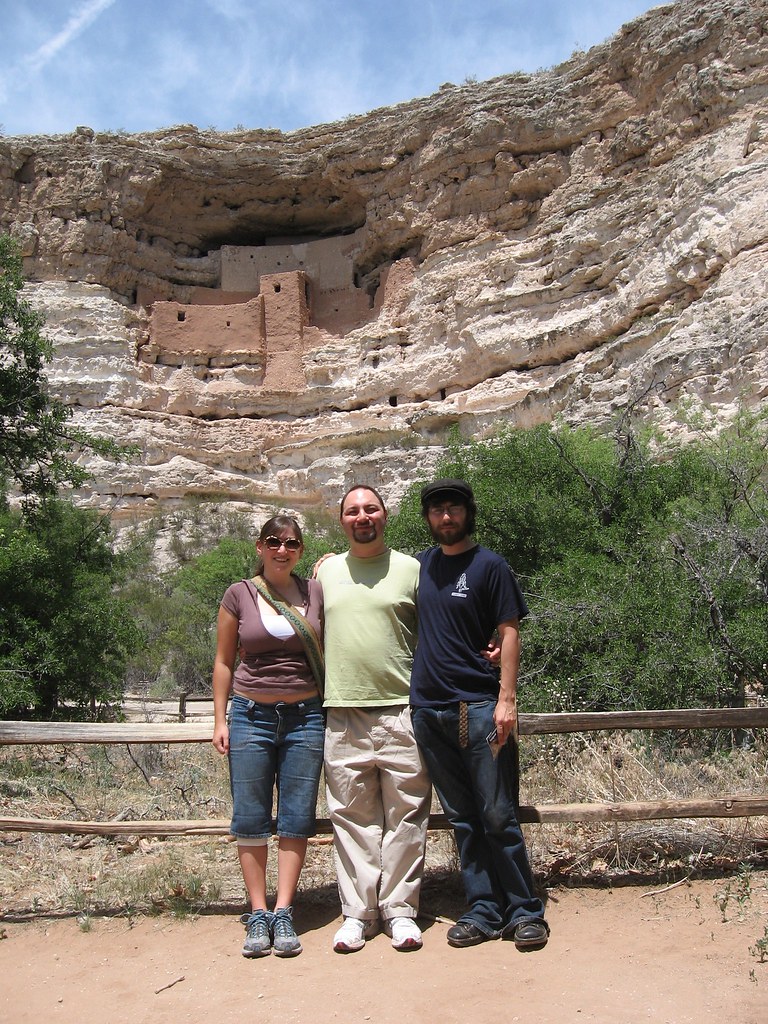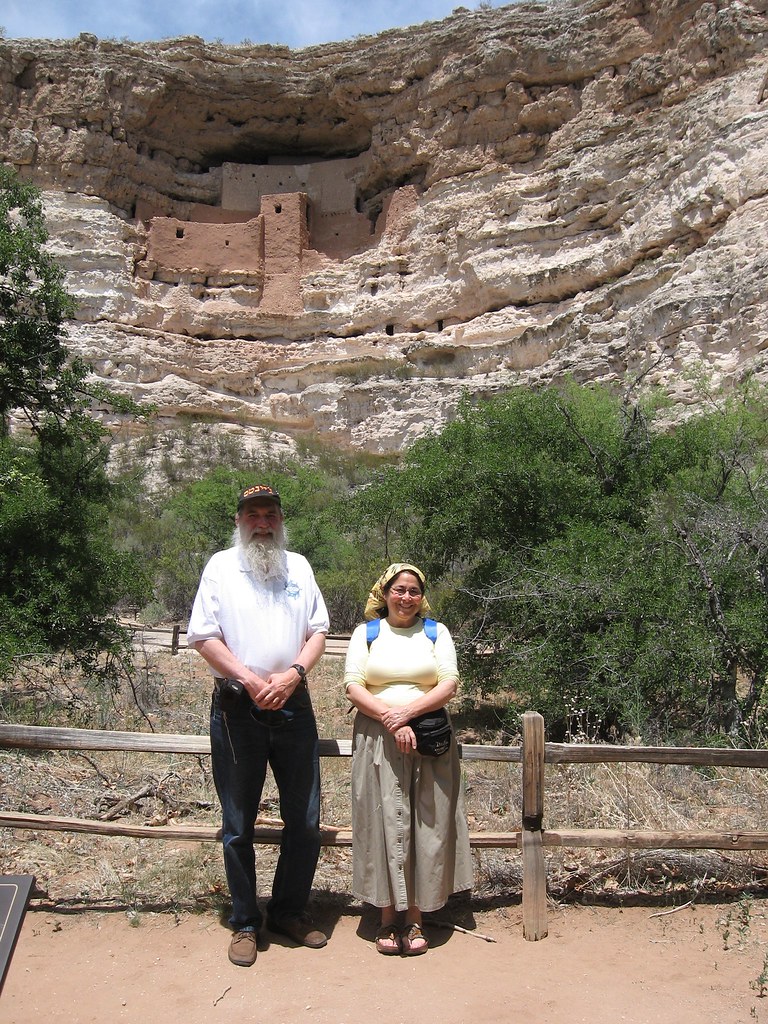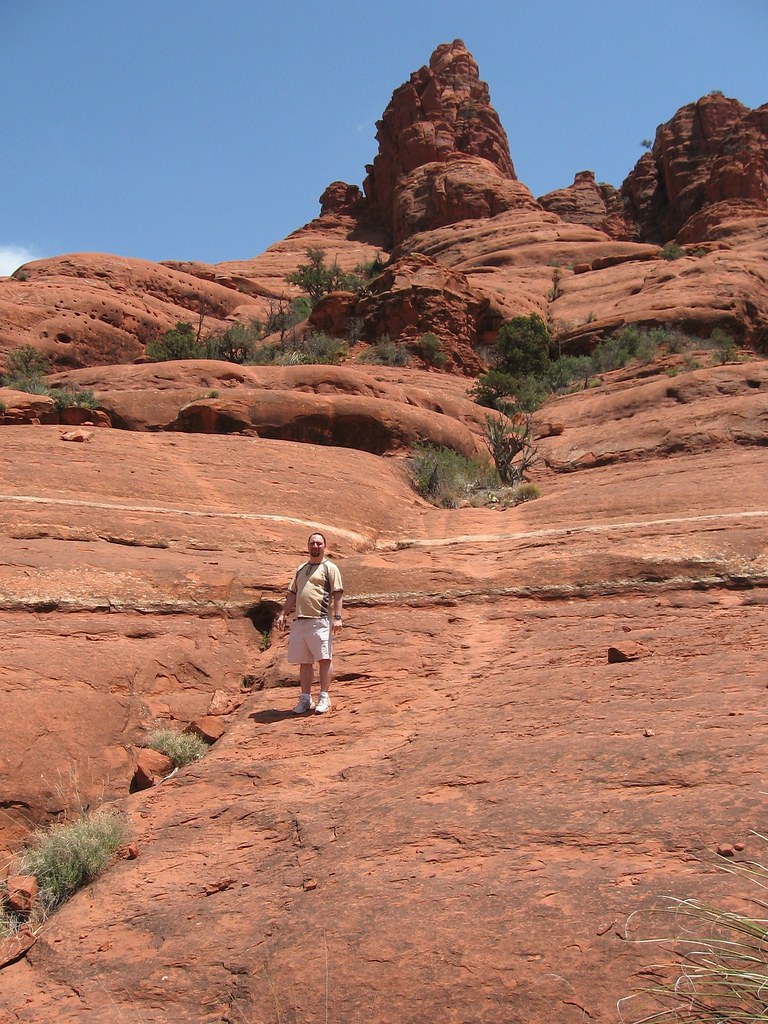Inspired by some of the creative and focused bloggers I met last night, I’ve decided to launch [mind your head], a blog for little vignettes. Enjoy.
[meeting new people the internet way]
 Lately I’ve been feeling like my social circle has become a bit too circumscribed. I’ve come to rely on a small group of friends who all have busy lives, and this was fine until recently. But now that Jenny is away in Chicago most weeknights, I’ve realized that I really need to get out there and meet some new people.
Lately I’ve been feeling like my social circle has become a bit too circumscribed. I’ve come to rely on a small group of friends who all have busy lives, and this was fine until recently. But now that Jenny is away in Chicago most weeknights, I’ve realized that I really need to get out there and meet some new people.
I don’t know how people used to do this before the Internet. Did they go to the local Y1 and look at a bulletin board? Did they just all know to join the local Kiwanis? Did people actually talk to each other in public, like while hanging out on stoops or whatever? I have no idea. But in my world, any social crisis is best solved through the magic of technology.
And so I have joined a whole bunch of Meetups for people interested in everything from Korean language partners to swing dancing to Scrabble to simply having lunch2.
Last night, after much hesitation during which I considered ditching the whole idea and going to a Marijuana Anonymous meeting3 instead, I finally decided to follow my original plan, which involved visiting the Won Buddhist temple for some very helpful yoga and mind clearing, then heading down to the Luca Lounge, way out on Avenue B and 13th Street, for the NY Bloggers Meetup.
At a table in the back garden, I joined about seven other bloggers and would-be bloggers for a freewheeling chat about digital media, concepts for blogs, how to draw comments and God (that last one was a tangent). Our illustrious hostess, Alejandra, does something complicated involving the coordination of international editions of Cosmopolitan and publishes the charming Sent from My Dell Desktop. I also had fun chatting with Paull Young (not the singer), an Aussie new to New York who publishes Young PR, works in new media strategic management, and needs to be taken to his first baseball game.
Far across the table was Carolyn, whose blog, Becoming a Woman of Purpose, has apparently begun to draw a community of women who are looking to gain from Carolyn’s insights as a life coach and just generally grow as people. With a rather different approach to women, another member of our group was planning a website devoted to teaching men how to pick up women, and I ended up in a long conversation about possibly editing some of the pickup scripts that will then be published in PDF format and sent to paying clients. This is not exactly my area of expertise — or interest — but I will edit for guvment scrip, and unlike, say, writing people’s college entrance essays, there was nothing about this particular activity that seemed outright unethical.
I know there were more blogs mentioned, and Alejandra graciously collected a list of them4, which she has promised to post to the Meetup group. I’m grateful to Alejandra for getting us all together, and just glad to be reminded that there are lots of interesting ways to meet new people.
Update: Alejandra, our fearless leader, just sent out a list of links to Meetup members’ blogs, and here they are:
Carolyn:
carolynsfo.blogspot.com
spiritwomen.blogspot.com
spiritwomen.wordpress.com
Josh:
www.palaverist.org
Paull:
youngie.prblogs.org
Alejandra:
sentfrommydelldesktop.blogspot.com
—
1. “As everybody knows my name at the recreation center.”
2. Who doesn’t like lunch?
3. For those who may be new here, I’m a recovering addict with 85 days of sobriety, which may explain some of the need to rebuild my social life.
4. On good ol’ paper.
[tie clips]
Today Slate takes on the important issue of tie clips and their apparent decline.
I agree with author Paul Devlin that the tie clip is a tremendously useful sartorial device for those of us who wear the useless sartorial flourish that is a silk necktie. A little bar of metal can be the difference between a tie that stays in the middle of my shirt, with its small end tucked behind, and a tie that flaps everywhere, particularly in a stiff breeze.
Devlin reports that the fancier haberdashers are no longer carrying much in the way of tie clips, and my visits to less fancy haberdashers don’t turn up much either (although Burlington does offer matching dollar-sign tie clips and cuff links that scream “I am poor people”).
My own tie clips, which come from the United Nations Gift Centre (love the spelling), are discreet bars of metal — one silver, the other gold — engraved with the words “UNITED NATIONS” and a small UN emblem.
Those are fine for now, but if I ever join the US Foreign Service, I’ll need to get new ones, and I sure hope someone out there still carries them.
[high school meme]
Here’s a high school meme, grabbed from miriamjoyce:
1. Who was your best friend?
That shifted over the years. My two closest friends during high school were Ashley and Lorie, whom I met my sophomore year, but Lorie and I had a serious relationship and then a devastating breakup at the start of my junior year, and Ashley moved to Connecticut around the end of my junior year. So freshman year, I guess it would’ve been Katie Wiley, though we were never that close; she loved Tesla more than anything in the world then. And senior year would’ve been Josh Poretsky, saxophone sensation and all-around sexy brooding ex-junkie.
2. What sports did you play?
Didn’t.
3. What kind of car did you drive?
I had my dad’s old Toyota Corona 4-door sedan, painted black (poorly) and given red racing stripes by Earl Scheib, until New Year’s Day 1992. I had been to see the Red Hot Chili Peppers, I think, and had just dropped off Teresa Laddish. What killed that car was the requisite 12-point turn I had to do to get out of Teresa’s narrow driveway. I had a steering-fluid-pump leak that sprayed hot goo all over my car’s electrical system whenever I turned sharply, and that night, as I rolled down the hill back towards the main road, I saw smoke and then flames coming out of the hood of my car. I watched it burn from the gas station across the street. At one point a cop car came by and failed to put out the fire with their little extinguisher. Eventually the fire department came and finished the job. The car was totaled, but my tapes survived.
After that, my parents got me a little red Toyota Tercel hatchback that would rattle and shiver whenever it got much beyond 75 miles per hour. I would lose it in parking lots because it looked exactly like every other little red hatchback.
4. It’s Friday night, where were you?
That was a fraught question. I was often at shul and then at home for Shabbos dinner, but often I didn’t want to be. I would cut out some nights after shul, some nights after dinner, some nights before the whole Jewish shebang. If I was elsewhere, it was hanging out with friends: at Ash’s house with Lorie and Robert and Heather, or at a concert, or at the pool hall (which we thought it was funny to call the “poo ha”) with Josh Poretsky, or heading into San Anselmo with Amber Renwick.
5. Were you a party animal?
No. I went to hardly any actual parties.
6. Were you considered a flirt?
I was considered a flirt and a perv.
7. Were you in band, orchestra, or choir?
I was in jazz band my senior year, playing guitar ineptly. We went to the Santa Cruz Jazz Festival and sucked ass.
8. Were you a nerd?
Yeah, although I was always one of the semi-cool alternanerds. The whole nerd thing was a little vague considering how few people had any intellectual ambition whatsoever. There was sort of a crowd of folks who took honors English and spoke in sentences and liked to think about things, and I guess we were nerds.
9. Did you get suspended/expelled?
Nope.
10. Can you sing the fight song?
We probably had a roll-over-and-die song. Our football team won one game during my entire time in high school, during my senior year; before that, their big claim to glory was the time they managed a lead over Marin Catholic at halftime. Anyway, I attended one school sporting event ever, a basketball game where Josh Poretsky was required to play sax in the band, and that was for the purposes of picking him up and leaving.
11. Who was your favorite teacher?
Mr. Skinner, my senior honors English teacher. He respected our minds enough to be a demanding bastard, and he introduced us to lots of very cool literature: Rosencrantz and Guildenstern are Dead, Waiting for Godot, The Bald Soprano. My Orthodox Jewish prejudices annoyed him enough that he encouraged me to read Spinoza. He was a stickler for grammar and taught it well.
12. What was your school’s full name?
Terra Linda High School.
13. School mascot?
The Trojans. *snicker*
14. Did you go to Prom?
My senior year, I had basically none of my real friends at my school, and no girlfriend, and then they decided to have the prom on a boat, and I get ferociously seasick. So no.
15. If you could go back and do it over, would you?
I used to have this recurring nightmare that even though I was a Columbia graduate and no one was questioning my degree, I’ve discovered that I was a point shy of graduating properly from TL, so I’ve gone back to take one last class, and now I can’t pass it. The last time I had this dream was back in 2001, during the last and best period of my employment at DoubleClick. It suddenly dawned on me in the dream that I would have to decide, come Monday, whether to go to high school or to my job. So I asked my then-boss, Karen Delfau, what I should do. “Come to work,” she said, like it was the most obvious thing in the world. I’ve never had the nightmare again.
16. What do you remember most about graduation?
Malika Ghazvani went tumbling into the gap between the stairs and the wall, then climbed out and shouted, “I’m fine! I’m okay!” And Mr. Skinner noted the irony of celebrating our individualism by dressing us all alike.
17. Where were you on senior skip day?
We didn’t really have one. Anyway, I was 18 in my senior year and could therefore sign my own notes. I used to waltz into the office with a note saying, “Please excuse Joshua Ross for all absences in the previous month,” with my signature underneath. I got a fair amount of leeway considering I mostly cut class to work on the school newspaper.
18. Did you have a job your senior year?
Nope.
19. Where did you go most often for lunch during high school?
Before I could drive, I had lunch out on the benches, then eventually moved to the upper hallway overlooking the benches, where I ate with the other semi-nerds. Once I had a car, I went to the mall most days and had a Chinese combo plate. During my depressive junior year, when I had few friends at school, I would take my lunch and drive up to a high hill and park, sitting in my car and listening to Nine Inch Nails’ Pretty Hate Machine and Soundgarden’s Badmotorfinger a lot.
20. Have you gained weight since then?
Lots.
21. What did you do after graduation?
I temped at Lawrence Berkeley Labs that summer, and then went off to Columbia.
22. When did you graduate?
1993.
23. Who was your Junior prom date?
There was a junior prom?
24. Are you going to your 10 year reunion?
I was just back in the US and unemployed at the time, and that made too lousy a story, so I skipped it.
25. Who was your home room teacher?
We didn’t have home rooms.
[arizona pics]
I’m back at work today after a week and a half in Arizona to celebrate my sister’s graduation from ASU (BA in art history) and to spend some time with my family in Sedona and at the Grand Canyon. Here are some of the pics my sister sent me.
[from philly to phoenix]

Now I know Philly doesn’t exactly have a reputation as a sexy destination. But Jenny got to know Center City pretty well during her project down there with Cigna, and she wanted to share it with me, and she had the points on her credit card to get us a free night at the DoubleTree, so down we went.
I have to admit that I was thoroughly charmed. Philly is a beautiful city that has preserved much of its colonial architecture and is full of ornate 19th-century confections such as City Hall, not to mention a thoroughly respectable skyline of elegant modern towers. On a beautiful spring day, Jenny and I were able to stroll through much of Center City, and I think we both most enjoyed the narrow, cobbled lanes full of colonial brick row-houses and cherry blossoms. Unlike New York’s Dutch-style homes, Philly’s have no semi-basements, which means there’s no call for the great big stoops so familiar in Brooklyn, which means the houses don’t have to be set back so far from the street. As opposed to Brooklyn’s stately quality, Philly’s old houses, largely free of ornamentation, create an atmosphere of friendly, practical intimacy. Indeed, part of the charm of the historic district is that most of even the oldest buildings are still living homes. Over in the downtown shopping district, we visited the Macy’s, which is home to the Wanamaker Organ, the world’s largest operational organ, which I can now attest puts up a hell of a racket when it’s going full-bore.
Philly has also grown into something of a foody town, and we ate exquisitely at a small Italian restaurant called Mercato. It was a Saturday night, Cinco de Mayo and the finest weather imaginable, so every decent restaurant was packed; we had to wait for a seat, but we sat on a small stoop in the lovely night and took in the passers-by. The Center City crowd seems to be well-healed yuppies, with a strong gay community and a fair number of families raising kids.
On Sunday we went to the Philadelphia Museum of Art, an elegant neoclassical palace on a hill, with excellent holdings in European art from the Middle Ages forward, in Asian art and in American work as well. Distinctive to the Philly Museum is its emphasis on architecture, with room after room of full interiors — a Chinese Buddhist temple, a Medieval cloister, a Parisian interior from the 19th century, a Dutch merchant’s bedroom — giving the art a rich context. Nor are the works themselves anything to sneeze at. Their Medieval collection is excellent, and there’s a rich selection of works by many of the European masters, particularly of the Impressionist and modern periods. And I was pleased to discover that they have devoted some meaningful attention to Korean art in recent years, managing to acquire a number of works that are actually good, including some fine Joseon furniture, pottery and painting and a bit of good contemporary art.
So we had a lovely weekend in Philly, and I now know Center City. As for the sprawling rest of the city, I haven’t the foggiest what goes on there.
*
I came back home with a brand new cold, unfortunately. I suppose I’ll be a bit of a disease vector when I take this thing out to Phoenix, Arizona, on Wednesday. I’ll be going for a week and a half to celebrate my sister’s graduation from ASU and do some family vacationing around Sedona and the Grand Canyon. So posts will be sparse.
[whopper vs. whopper]
Ever order something at a fast food restaurant because the photo on the menu board looks good, and then feel cheated when you get some lumpen beige thing? This phenomenal series of photos is photographic proof that that’s just how it works. (Via BoingBoing.)
[goin’ to chicago]

Chicago by Sufjan Stevens (Illinois)
Today is Jenny’s first day at her new consulting gig in downtown Chicago, where she will be spending three to four days a week for the rest of the year and possibly beyond.
I know next to nothing about Chicago. I have only been there once, for an evening, and spent it in a depressingly cheesy jazz club. I know they have deep-dish pizza, that the Blues Brothers and Ferris Bueler lived there, that it once burned to the ground long ago, that it was a magnet for the westward migration of Polish and German and Irish and Italian immigrants and a magnet for the northward migration of African-Americans. Martin Luther King, Jr., did poorly there. The buildings downtown were steam-cleaned in the eighties for the filming of The Untouchables. Chicago blues is an electric variety that helped create rock and roll and that has a dangerous tendency to fall into wanky self-parody. Chicago is America’s second city, and the moniker “Windy City” comes from a reference to its politicians, not its weather.
And that’s about it. Trivia, really. None of the living feel of the place. You could drop me in the middle of Jaipur or Seoul without a map and I could find my way, but I’d be hopeless in Chicago.
But like most great cities, Chicago is also a city of the mind, a target of the imagination. In “Baby are Yeng,” Nancy Jacobs and Her Sisters (about whom I could find basically no information) give South African bounce to the very African-American yearning to leave the Jim Crow South behind for better odds in the big city, in what has to be one of the catchiest tunes ever. (Via the inimitable Locust St.) And in “Chicago,” Sufjan Stevens manages to invoke both that city and New York in a story that I don’t understand, but that moves me anyway.
Jenny, I’ll miss you when you’re far away. Have fun!
[secrets and food]
 I’m walking down Sixth Avenue on a Friday evening after work, hurrying to my therapist, a blue-green headache crawling over from the back of my skull towards my right eye. I’m hungry. I want meat. The Halal Foods truck isn’t open yet, and the cart in front of the Best Buy on 23rd has nothing but pretzels. Time is running short. I duck into the CVS on 25th and browse the snacks. Jerky is ridiculously expensive. I settle for a cannister of Slim Jims. They’re greasy in a queasy way, but they have the mix of salt, fat, protein and umami that I’m craving. They get me through.
I’m walking down Sixth Avenue on a Friday evening after work, hurrying to my therapist, a blue-green headache crawling over from the back of my skull towards my right eye. I’m hungry. I want meat. The Halal Foods truck isn’t open yet, and the cart in front of the Best Buy on 23rd has nothing but pretzels. Time is running short. I duck into the CVS on 25th and browse the snacks. Jerky is ridiculously expensive. I settle for a cannister of Slim Jims. They’re greasy in a queasy way, but they have the mix of salt, fat, protein and umami that I’m craving. They get me through.
I stuff the cannister in my bag, and when I get home, I slip it into a dresser drawer. I don’t want Jenny to see. I’m ashamed of having bought such down-market junk food. I’m afraid she’ll think I’m disgusting for eating it, for wanting to eat it. There’s no reason she needs to know.
This is the insanity from which I am working to recover. I confessed to Jenny last night about the Slim Jims, though it hardly counts as a confession considering that I hadn’t done anything wrong. It made her laugh. What’s especially ridiculous about the whole thing is that I went with Jenny to McDonald’s on Saturday to indulge her particular junk food craving. Why would she have a problem with mine? But I had to confess because the mechanism of this secret-keeping — the shame, the hiding, the justification — was exactly the same as the mechanism for much bigger, more serious secrets.
This incident has got me thinking now about my relationship with food. I don’t think of myself as someone with an eating disorder, though I tend to overeat from time to time (like most Americans) and to treat emotional distress with tasty treats (also like most Americans). But my psychological relationship with food is nevertheless tangled.
I grew up in Northern California in the late 1970s and 1980s, an era when food virtue replaced religion for many people. Terms like “macrobiotic” and “Pritikin” and “organic” were in the air, and food allergies were just coming into fashion. For children, the complex restrictions, and the earnest moral tone that went with them, was often bewildering, especially in group settings. (I still harbor a bitterness about efforts to convince me that carob was just like chocolate. It is not, and any idiot could taste the difference. It was insulting.)
My parents were pretty chill on the health food front, but beginning in my early childhood, a strange, isolating, ever-tightening net of restrictions began to enclose me, one intimately tied to morality and virtue: the laws of kashrus. At first we just kept kosher style, which was easy and kind of fun, offering a whiff of superiority without demanding much. We didn’t eat pork and we kept our milk and meat separate. No big. It meant we were better people.
But gradually the rules became stricter, and eventually we went wholly kosher: separate dishes for milk and meat, eating only products that were labeled with a hechsher, subscribing to newsletters that detailed the ongoing debates about even hechshered foods, waiting an hour (then three, then six) after eating meat before eating anything with milk in it. There were no kosher restaurants in Northern California, so that was out too. Chinese food was gone from my life. Around friends, I was expected to keep track of a vast library of unacceptable treats and shun them when offered. No more Oreos. No more Starbursts. And there was always the danger that a beloved product would slip into doubt. Worse, my parents would make an exception for something they loved, and then one day decide — arbitrarily, as far as I could tell, and certainly without consulting me first — that the exception had to end.
Holidays brought other restrictions. Every couple of months, fast days came around, and from age 13 I was supposed to go either from sunset to sunset or from dawn to sunset, depending on the particular fast, with neither food nor drink of any kind. Before fast days, including the highly sacred Yom Kippur, I would sneak extra snack food into my room, but I was always careful tokeep myself hungry enough to eat a lot when the fast ended. Passover was a week of confusion and despair, as the available foods were limited to the flavorless and the difficult; I lived primarily on macaroons, leftover roast from the Seder, and a sort of matzah-based breakfast cereal my mother concocted, and which was always under threat from a potential restriction on gebruchts, or matzah that has become wet.
Added to those food issues was my father’s ongoing hectoring of my mother about her weight. She wasn’t ever obese or even very chubby, but neither was she the hot-bodied 19-year-old he married and painted in a bikini, and I don’t think my father accepted easily that my mother’s body was simply never going to return to the state it was in when she was getting catcalls across Europe in 1966. And none of us could help but be aware of my maternal grandmother’s long struggle with serious obesity, punctuated by crash diets and involvements in OA.
That this way of life led to secrecy and dualism is hardly surprising. I wanted to be a good son and a good Jew. I also wanted to eat things that tasted good. What alcohol or cigarettes or pornography are for some kids, bacon and Nabisco products were for me. Except that in other people’s homes, these things were completely normal. When Dan down the street got his Easter basket full of Starbursts and offered to share, I didn’t say no. By the time I reached adolescence, when constant hunger and rebellion are pretty much the norm anyway, I was willing to break food rules whenever I could. In high school, I would drive down to the mall and eat a big plate of Chinese food for lunch, savoring the pork dishes. It wasn’t that I went out of my way to eat pork specifically, but that I wanted to eat what I wanted to eat, without restrictions from my parents.
And I wanted to eat in restaurants. I wanted to be normal. When Joey got into Thai food — his parents were much slower to adopt the full religious regimen — I wanted to know what he was excited about. My parents actually mocked the food freaks with their semi-imaginary health fragilities, somehow never realizing that they’d turned me into the nerdy kid with the milk allergy. (Later, in my pot-smoking years, when I shunned tobacco-mixed spliffs because tobacco gives me headaches and tastes lousy, I usually felt it necessary to make some comment like, “I hate to be the kid who says, ‘I cannot have milk because I have a lactose intolerance,’ but I really don’t like tobacco.”) It was one more of the many, many ways that Orthodox Judaism isolated me and kept me alienated.
In my teen years, I would disappear into my room with a box of cookies and not return it to the kitchen. Did it take me a week to finish, or two days, or did I finish it that night? I kept the pace of my indulging secret from my parents so that they couldn’t scold me for overeating, or for the cost of my eating.
It was also in this period that I learned from my peers to feel moral and political shame around eating. My high school had militant vegans. Eating meat was bad. Eating environmentally damaging foods was bad. Mostly I made a mockery of this sort of thinking, but it affected me. And perhaps because of my own upbringing, I have found myself attracted to or in relationships with food moralizers quite often. Berit was a vegetarian who thought seasoning was creepy; T had complex ethics and aesthetics around food that kept me nervous and uncertain. To an extent, I think I hid the Slim Jims from Jenny because T might have scolded me for eating them. And I have sometimes waited for Jenny to go to bed so that I can snack without incurring her fear that I’ll get diabetes like her father.
But I like Slim Jims from time to time. I like Hormel chili. And more importantly, I have a right to like whatever I like. Food shame and food secrecy are habits that I need to break. They are part of my systems of indulging my own desires through secrecy rather than being open about what I want and need. And that has to change.
[meetings]
I need 12-step meetings.
Last night was my first in a week, and that’s the longest I’ve gone between meetings since I began my recovery 51 days ago. I missed my usual Sunday and Tuesday meetings to spend time with Jenny and her parents, who were visiting from Los Angeles, and I had a lovely time with them. On Sunday we did a walking tour over the Brooklyn Bridge, and Tuesday night we went to the New York City Ballet for opening night of the spring season, an exquisite performance of modern classics by Balanchine.
This was all good, but by Wednesday and Thursday I was getting mawkish. Jenny had spent a lot of the time with her parents exploring her own past and theirs, and this led me into sentimental considerations of my own situation, especially as it pertains to my recovery from addiction. I was falling into the addict’s trap of looking back on the active addiction through rose-colored glasses, seeing it as sexy and adventurous and romantic. I was also feeling deeply lonely, and all of this was very much a self-absorbed mooning.
Last night’s meeting was a powerful corrective. There were several newcomers, all feeling the raw hurt and despair and terror and shame that I felt when I came in less than two months ago. There was nothing pretty about the pain they were feeling or the damage they felt so much shame for having done to their lives and to the people closest to them.
But there was hope, and I was not alone. We were in this together, and for 90 minutes I was pulled out of myself. I listened well last night and identified with much of what I heard. I was present for others, and they were present for me. And in those moments of being present for others, the whole question of life’s purpose simply disappeared.
Amazingly, what I experienced briefly last night is exactly what is described in the Ninth Step Promises (pp. 83-84 of the AA Big Book), which are read at every meeting:
If we are painstaking about this phase of our development, we will be amazed before we are half way through. We are going to know a new freedom and a new happiness. We will not regret the past nor wish to shut the door on it. We will comprehend the word serenity and we will know peace. No matter how far down the scale we have gone, we will see how our experience can benefit others. That feeling of uselessness and self pity will disappear. We will lose interest in selfish things and gain interest in our fellows. Self-seeking will slip away. Our whole attitude and outlook upon life will change. Fear of people and of economic insecurity will leave us. We will intuitively know how to handle situations which used to baffle us. We will suddenly realize that God is doing for us what we could not do for ourselves.
Are these extravagant promises? We think not. They are being fulfilled among us — sometimes quickly, sometimes slowly. They will always materialize if we work for them.
I’m not saying that I was fully conscious of every one of these promises being fulfilled in the moment, and I’m definitely not saying that these promises have come true in my life overall. I haven’t earned them yet, for one thing; there’s still a long journey for me before I take on Step Nine.
What last night taught me, though, is that the Ninth Step Promises are a wordy way of describing a state of Zen. Notice that they’re not promises about the world beyond the self, but about one’s own perception and understanding. In a Zen state, there is no self-seeking, no worry, no fear, only freedom and happiness and serenity and peace. We enter into these states when we are fully engaged in what we are doing, fully present in the most profound sense. That kind of engagement is what I need to bring into my life, and I believe that the Twelve Step tradition is right to suggest that service to others is a powerful way to achieve it.
Looks like something I will need to explore further.

